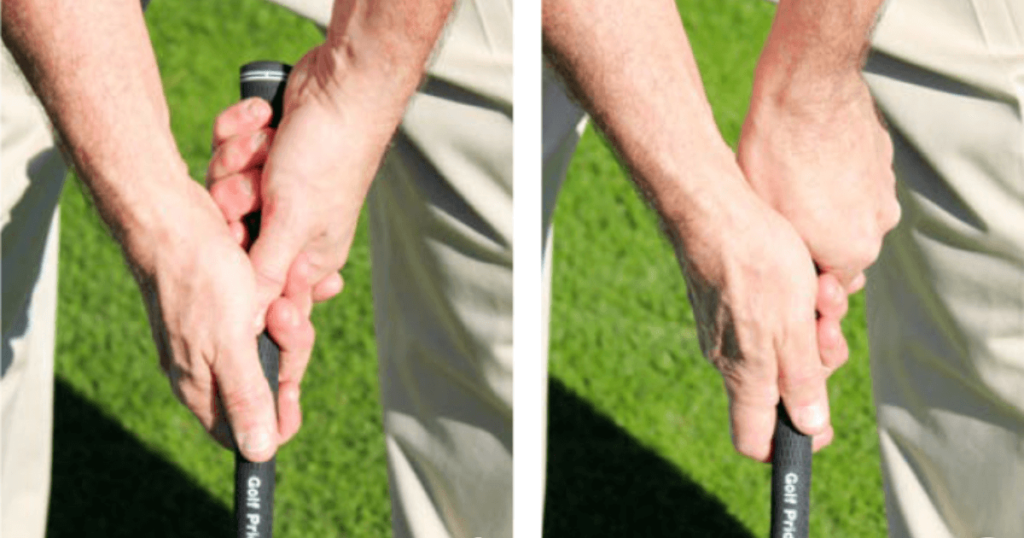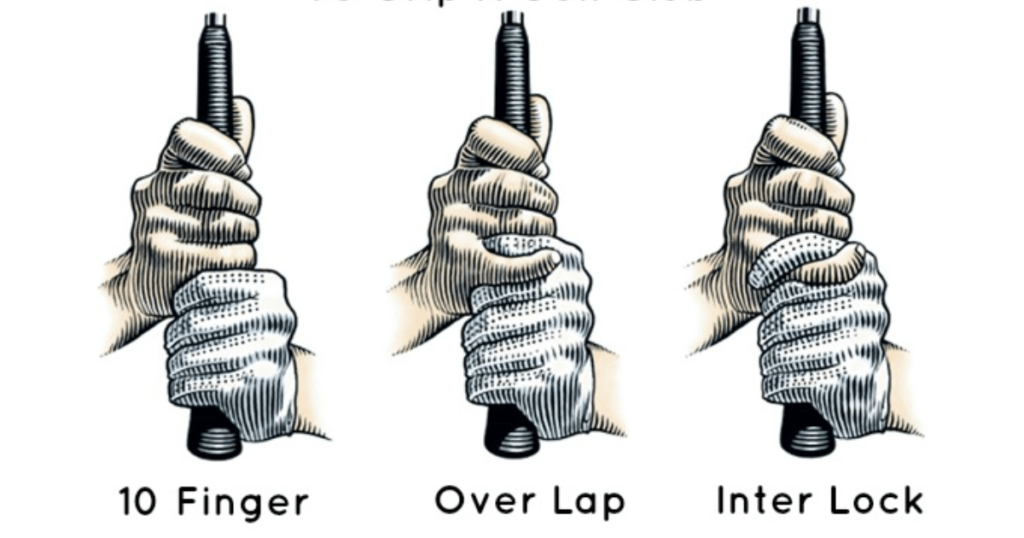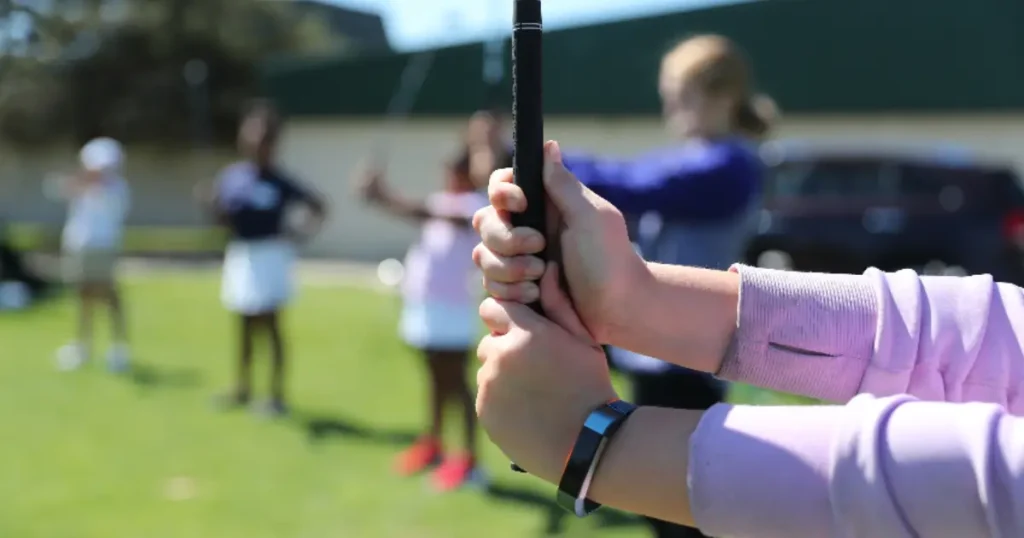A perfect grip is the basis of a strong golf swing, and it is an essential skill that every beginner golfer should learn. The good news is that learning how to hold a golf club is one of the most basic aspects of the game. But where do you begin? And what kind of grip is best for you? We go over all of this in more detail, including the role of each hand in the golf grip and some important golf grip language.
Definitions
In golf, when we say “grip,” we mean how you hold the club. It’s not just about where you place your hands; it’s also about the rubbery part where they go.
Now, the “clubface” is the front part of the club that strikes the ball when you swing. How you grip the club influences how the clubface is positioned, which determines where your shot goes.
If you have a “weak” grip, your hands are closer to the target side of the club. This can open up the clubface when you hit the ball, sending your shot to the right (if you’re right-handed).
On the other hand, a “strong” grip places your hands closer to the club’s back. This often results in a closed clubface at impact, which can cause your shot to curve left (again, for right-handed golfers).
Hand Position

Begin by putting the clubface behind the ball so that it is level to your target. For right handed golfers, your left hand should be closer to the butt of the club, while your right hand should be just under it, lower down the handle. The left hand grip is essential for controlling the clubface and determining the desired impact position.
Place the club’s grip diagonally across the fingers of your left hand, running from the base of your pinky finger to the middle of your index. A palm grip can limit wrist action, so the club should be held across your fingers rather than deep in your palm. Your thumb should be pointing down the shaft.
The right hand matches the actions of the left hand and provides stability throughout the swing. Position the right hand to cover the left thumb, forming a V-shape between your thumb and forefinger that points toward your right shoulder. The lifeline from your right hand should fit snugly over your left thumb, ensuring a secure connection.
Different Types of Grips

After you’ve learned the basic rules of the golf grip, you can experiment with slight finger placement changes to find the setup that best suits you. The best grip for you is largely determined by your personal preferences and level of comfort. Experiment with each grip to see which one looks the most natural and allows for consistent, controlled swings. Hand size and flexibility are also essential factors when selecting the appropriate grip.
Ten-Finger Grip (Baseball): In this grip, all ten fingers make contact with the club. It is often preferred by golfers who struggle with overlapping or interlocking grips.
The interlocking grip: Involves interlocking the left index and right pinky fingers. It provides greater wrist flexibility and control.
The overlapping grip (Vardon Grip): Is one of the most common ways to hold a golf club. This type of golf grip is used by an estimated 90% of Tour players. It was named after the legendary British golfer Harry Vardon, who advocated for this type of grip. For a right-handed golfer, rest your right pinky finger between the left index and middle fingers.
Techniques for Improved Golf Club Grip

Here are some tips to help you improve your technique.
Seek professional advice take golf lessons from a pro to get specific guidance on how to hold a golf club and improve your overall technique.
Purchase a training grip just as you can use training wheels to learn to ride a bike, you can also purchase training grips! The Lamkin Training Grips are an excellent and easy way to learn proper hand and finger placement. Once you’ve found the ideal grip, you can replace it with a standard golf grip.
Spend time on the driving range perfecting your grip. It may take some time to find the right grip for your swing, so be patient.
A proper grip is the foundation of a successful golf swing. Now that you’ve learned how to hold a golf club, you can experiment with overlapping, interlocking, and ten-finger grips to find the one that works best for you. With dedication and the right techniques, you can become a more confident and skilled golfer.
FAQs
How should a beginner grip their golf club?
A beginner should hold the golf club in both hands, with the handle diagonally across the fingers of the lead hand. The trail hand should then be placed on the handle, making a V shape with the thumb and index fingers.
How do you hold a golf club step by step?
Hold the club in front of you, clubface square to the target. Place your lead hand (left hand for right-handed players) on the club’s handle diagonally across your fingers. Wrap the trail hand (right hand for right-handed players) around the handle, making sure the hands can work together comfortably. Make sure the V shape formed by the thumb and index finger of each hand points toward your trail shoulder.
How should women hold a golf club?
Women should use the same fundamental rules to grip a golf club as men. Proper hand stance is essential for achieving a comfortable and secure grip that allows for flexibility and control during the swing. Individual adjustments may be required depending on hand size and strength.
How should a beginner golfer swing?
A beginner golfer should begin by learning the fundamental mechanics of the golf swing, such as posture, grip, alignment, and stance. Maintain a smooth, controlled motion, keeping the clubhead on the intended swing path. Practice drills and seek advice from a qualified instructor to improve technique and swing consistency.
Conclusion
Finally, learning the proper grip is essential for any beginner golfer. Beginners can develop consistent and powerful swings by first learning how to hold a golf club properly. With patience, practice, and attention to technique, beginners can improve their game and enjoy the process of learning on the golf course.

